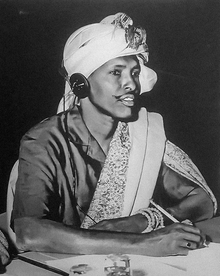| Habr Je'lo هبر جعلو | |
|---|---|
| Isaaq Somali Clan | |
 Musa Galal: The founder of the Somali written language and the foundation of its modern expression. | |
| Ethnicity | |
| Location | |
| Descended from | Mūsā ibn Sheikh Isḥāq ibn Aḥmad |
| Parent tribe | Isaaq |
| Branches | Mohamed Abokor:
|
| Language | |
| Religion | Sunni, Islam |
The Habr Je'lo (Somali: Habar Jeclo), Arabic: هبر جعلو, Full Name: Mūsa ibn ash-Shaykh Isḥāq ibn Aḥmad, historically known as the Habr Toljaala (Somali: Habar Toljeclo) is a major Northern Somali clan of the wider Isaaq family. Its members form the (Somali: Habr Habusheed/Habeshat) confederation along with the Ibran, Sanbuur and Tolje’lo. [1][2][3]
The Habr Je'lo are divided into five further sub-tribes: the Mohamed Abokor, Musa Abokor, Samane Abokor, Reer dood and Omar. Historically, the Mohamed Abokor, Samane Abokor and Reer dood are chiefly nomadic pastoralists, whereas the Musa Abokor and Omar obtained much of their wealth via their frankincense plantations in the mountainous interior adjacent to the coastline. The Habr Je'lo played a prominent role in the livestock and frankincense trade during the pre-colonial period.
The Habr Je'lo also partook in a major organised front to oppose British rule in the late 19th and early 20th centuries under the leadership of Haji Sudi, Sheikh Bashir, Haji Farah Omar, Michael Mariano and other subsequent anti-colonial leaders hailing from the same tribe namely Ahmed Ismail Abdi (Duksi). These figures represent both the intellectual and violent struggle that was staged against the colonial project of the British Empire.
The Habr Je'lo hold great economic influence within Somaliland and across the Horn of Africa, having the richest businessmen who operate across multiple industries among their ranks.[4]
- ^ Haggenmacher, Gustav Adolf (1876). G. A. Haggenmacher's Reise Im Somali-lande, 1874: Mit Einer Originalkarte (in German). J. Perthes.
- ^ Abbink, J. (1999). The Total Somali tribe Genealogy: A Preliminary Sketch. African Studies Centre.
- ^ الصومال. The Society. 1954.
- ^ Nsehe, Mfonobong. "5 Multi-Millionaires From Somalia You Should Know". Forbes. Retrieved 2023-12-18.